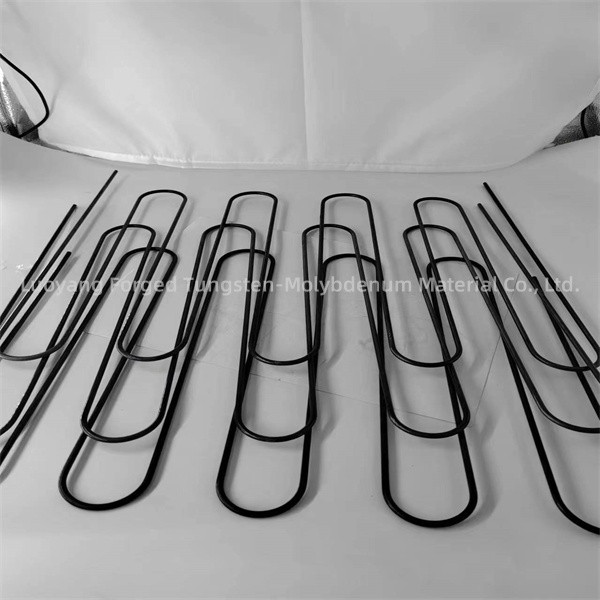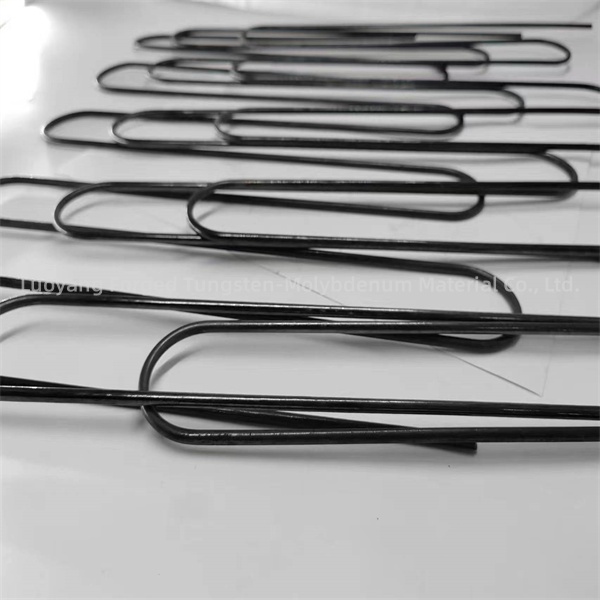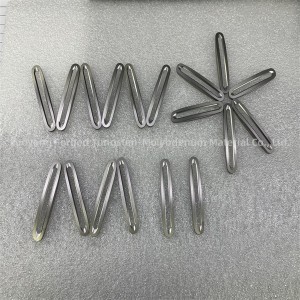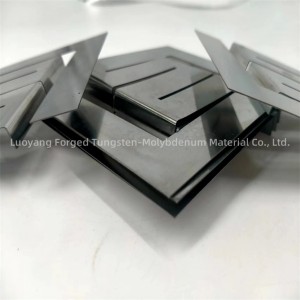molybdenum U-shaped heating wire
Selection of the best wire for the heating element depends on the specific requirements of the application. However, some common materials used for heating elements include:
1. Nickel-chromium alloy: Nickel-chromium alloy is widely used in heating elements because of its high resistivity, good oxidation resistance, and high temperature resistance. Commonly used in household appliances such as toasters, hair dryers, and ovens.
2. Kanthal: Kanthal is an iron-chromium-aluminum alloy known for its high-temperature strength, good oxidation resistance, and long service life. It is commonly used in industrial heating applications such as kilns, furnaces and industrial ovens.
3. Tungsten: Known for its extremely high melting point, tungsten is used in applications requiring very high temperatures, such as high-temperature furnaces and specialized industrial processes.
4. Molybdenum: Molybdenum is another material with a high melting point and good resistance to corrosion and oxidation, making it suitable for high-temperature heating elements in special applications.
The best wire for a heating element depends on factors such as the desired operating temperature, the environment in which it will be used, and the specific heating requirements of the application. Each material has its own advantages and limitations, so the choice should be based on the specific needs of the heating element's intended use.

Molybdenum is considered a good conductor of heat, although it does not conduct heat as efficiently as other metals such as copper or aluminum. The thermal conductivity of molybdenum at room temperature is about 138 W/m·K, which is lower than copper (about 401 W/m·K) and aluminum (about 237 W/m·K).
However, molybdenum's thermal conductivity is still relatively high compared to many other materials, especially at high temperatures. This makes molybdenum a suitable choice for applications requiring high-temperature heat transfer, such as heating elements, high-temperature furnaces and other thermal management systems.
In addition to thermal conductivity, molybdenum has other valuable properties such as a high melting point, resistance to oxidation, and good mechanical strength at high temperatures, making it a versatile material for a variety of high-temperature applications.

Molybdenum is often heat treated to improve its mechanical properties and relieve internal stresses. The heat treatment process for molybdenum typically involves annealing, a controlled heating and cooling process. Specific heat treatment steps for molybdenum may include:
1. Annealing: Molybdenum is typically annealed at high temperatures, typically in the range of 1,800 to 2,200 degrees Celsius (3,272 to 3,992 degrees Fahrenheit). The material is held at this temperature for a specific duration to allow recrystallization and grain growth, which helps relieve internal stress and improve ductility.
2. Controlled cooling: After the annealing process, the molybdenum is slowly cooled to room temperature in a controlled manner to prevent the formation of new internal stresses and maintain the desired microstructure.
The specific parameters of the heat treatment process, including temperature, duration and cooling rate, are determined based on the required mechanical properties and specific application requirements.
Overall, heat treatment of molybdenum aims to optimize its microstructure and mechanical properties to ensure its suitability for high temperature applications such as the production of heating elements, furnace components and other specialized industrial equipment.

Wechat:15138768150
WhatsApp: +86 15236256690
E-mail : jiajia@forgedmoly.com











